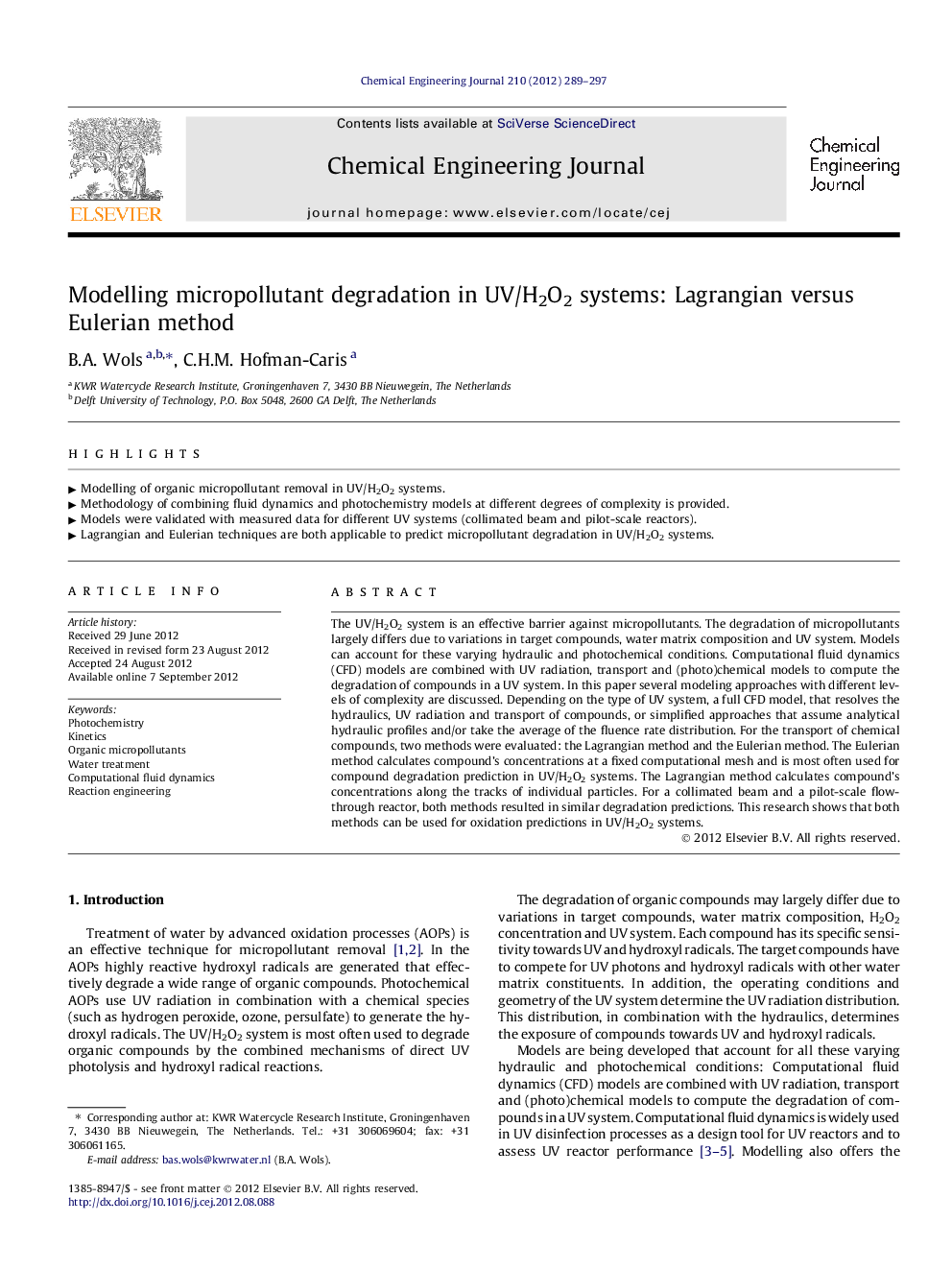| Article ID | Journal | Published Year | Pages | File Type |
|---|---|---|---|---|
| 149368 | Chemical Engineering Journal | 2012 | 9 Pages |
The UV/H2O2 system is an effective barrier against micropollutants. The degradation of micropollutants largely differs due to variations in target compounds, water matrix composition and UV system. Models can account for these varying hydraulic and photochemical conditions. Computational fluid dynamics (CFD) models are combined with UV radiation, transport and (photo)chemical models to compute the degradation of compounds in a UV system. In this paper several modeling approaches with different levels of complexity are discussed. Depending on the type of UV system, a full CFD model, that resolves the hydraulics, UV radiation and transport of compounds, or simplified approaches that assume analytical hydraulic profiles and/or take the average of the fluence rate distribution. For the transport of chemical compounds, two methods were evaluated: the Lagrangian method and the Eulerian method. The Eulerian method calculates compound’s concentrations at a fixed computational mesh and is most often used for compound degradation prediction in UV/H2O2 systems. The Lagrangian method calculates compound’s concentrations along the tracks of individual particles. For a collimated beam and a pilot-scale flow-through reactor, both methods resulted in similar degradation predictions. This research shows that both methods can be used for oxidation predictions in UV/H2O2 systems.
► Modelling of organic micropollutant removal in UV/H2O2 systems. ► Methodology of combining fluid dynamics and photochemistry models at different degrees of complexity is provided. ► Models were validated with measured data for different UV systems (collimated beam and pilot-scale reactors). ► Lagrangian and Eulerian techniques are both applicable to predict micropollutant degradation in UV/H2O2 systems.
